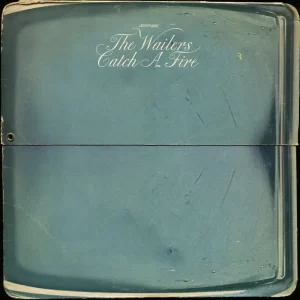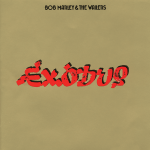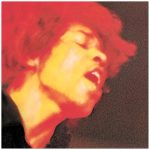
Category: Album
Title: Catch a Fire
Artist: Bob Marley
Released: April 13, 1973.
Genres: Reggae, Rock, Roots Reggae
Album Background
Release Date and Label
Catch a Fire was released on April 13, 1973, by Island Records. This album marked Bob Marley’s and The Wailers’ first major international release, bringing reggae music to a global audience.
Artist Context
At the time of creating Catch a Fire, Bob Marley and The Wailers were transitioning from local Jamaican success to international recognition. The band had already established a following in Jamaica, but this album was a crucial step in gaining a broader audience, particularly in Europe and North America.
Concept and Inspiration
Themes and Messages
The album’s themes revolve around social justice, political oppression, and the struggles of the Jamaican people. Songs like “Concrete Jungle” and “Slave Driver” address issues of inequality and hardship, while others, like “Stir It Up,” focus on love and personal liberation.
Inspiration
Marley drew inspiration from the socio-political environment in Jamaica, as well as his Rastafarian beliefs. The struggles of the Jamaican working class and the influence of the Rastafari movement are central to the album’s message, blending personal and political narratives.
Writing and Recording Process
Songwriting and Recording
The songs on Catch a Fire were primarily written by Bob Marley, with contributions from Peter Tosh. The album was recorded at Dynamic Sound Studios in Kingston, Jamaica, and later at Island Records’ studio in London. The recording process involved adding overdubs and mixing to appeal to a broader, international audience.
Notable Collaborations
Chris Blackwell, the founder of Island Records, played a significant role in the production process. His vision was to make the album more accessible to rock audiences by adding elements like electric guitar and keyboards, performed by session musicians, including Wayne Perkins and John “Rabbit” Bundrick.
Production Details
Producers and Sound
Key Producers: The album was produced by Chris Blackwell and The Wailers.
Sound and Musical Style: Catch a Fire blends traditional reggae with rock influences, creating a sound that was both authentic to the band’s roots and accessible to international listeners. The production added a polished, rock-oriented edge to the reggae rhythms, which helped the album cross over to mainstream audiences.
Track-by-Track Analysis
-
Track Listing:
-
- “Concrete Jungle”
- “Slave Driver”
- “400 Years”
- “Stop That Train”
- “Baby We’ve Got a Date (Rock It Baby)”
- “Stir It Up”
- “Kinky Reggae”
- “No More Trouble”
- “Midnight Ravers”
-
Key Tracks:
-
- “Concrete Jungle”: The opening track sets the tone for the album with its powerful lyrics about urban life and the struggles within it. Bob Marley’s voice conveys a deep sense of despair and determination, while the instrumentation, including Wayne Perkins’ bluesy guitar riffs, adds a layer of complexity that resonated with international audiences.
- “Slave Driver”: This track is a direct critique of the historical and ongoing oppression of African people. The lyrics draw a parallel between slavery and modern-day exploitation, delivered with a raw intensity that captures Marley’s commitment to social justice. The driving rhythm and sharp lyrics make it one of the album’s most politically charged songs.
- “Stir It Up”: A love song that showcases a softer side of Marley, “Stir It Up” became one of his most recognizable hits. Its laid-back groove and smooth vocals offer a contrast to the album’s more intense tracks, highlighting Marley’s versatility as a songwriter and performer. The song’s universal theme of love helped it gain widespread appeal.
- “No More Trouble”: A plea for peace, “No More Trouble” reflects Marley’s desire for an end to conflict and violence. The song’s repetitive chorus and steady beat reinforce its message, while the backing vocals and instrumentation create a haunting, almost hypnotic atmosphere.
- “Kinky Reggae”: This track combines playful lyrics with a bouncy, infectious rhythm, showcasing Marley’s ability to blend serious themes with lighter, more accessible content. The song’s upbeat tempo and catchy melody made it a favorite among fans and a staple in Marley’s live performances.
Awards and Nominations
- Awards and Nominations:
- While Catch a Fire did not receive any major awards at the time of its release, its impact on the music industry was profound. The album was later recognized as one of the greatest reggae albums of all time, influencing countless artists and contributing to the global spread of reggae music.
- Sales and Charts:
- Catch a Fire helped to establish Bob Marley and The Wailers as international stars. The album reached No. 171 on the Billboard 200 in the United States, a modest position but a significant achievement for a reggae album at that time. Over the years, the album has sold millions of copies worldwide and continues to be celebrated as a classic.
Impact and Legacy
- Influence and Long-term Impact:
- Catch a Fire is credited with bringing reggae music to a global audience. The album’s fusion of reggae and rock elements set a precedent for the genre’s crossover into mainstream music. It established Bob Marley as a global icon and laid the foundation for his future successes. The album’s political and social messages also resonated with audiences worldwide, influencing not only music but also the broader cultural and political landscape.
Conclusion
- Summary:
- Catch a Fire was a groundbreaking album that introduced the world to Bob Marley and The Wailers, marking the beginning of reggae music’s global influence. The album’s powerful themes, innovative production, and Marley’s charismatic performances combined to create a lasting impact on the music industry.
- Final Thoughts:
- As a pivotal moment in Bob Marley’s career and in the history of reggae, Catch a Fire remains a vital work that continues to inspire musicians and listeners alike. Its blend of social commentary, infectious rhythms, and Marley’s unique voice makes it not only a classic album but also a significant cultural milestone.


















Leave a Reply